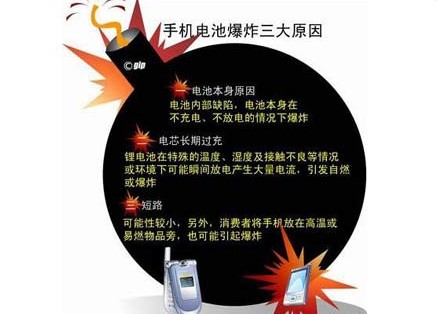Compared with other battery technologies, lithium-ion batteries are lighter, cheaper, and have higher energy density. They have become the main form of rechargeable batteries today, and lithium-ion batteries are used in everything from mobile phones to laptops. But this battery has a problem, and in some extreme cases, it may explode. However, when charging, there is generally no electric death.
Charging mobile phone
The battery from the mobile phone battery is only 3.7 volts. If it is a charger, it now charges only 4.2 volts, which means that the voltage is also very low, so from this it can generate a very strong current or The possibility of electrocution is very small. There is only one case: the current blows down the charger, and then the charger is broken down, and at the same time the protection on the phone is also broken down, then 220 volts directly to the phone, so after It is possible to electrocut people. But this time people's instinctive reactions can often be opened.
There is no possibility that the charging phone will cause electrocution to die. Everyone has different sensitivities to current, which varies from person to person. Some people who are exposed to 10 volts will have an adverse effect on the body. The telephone line with 4-5 volts will feel awkward. The signal transmitted by the mobile phone also has a certain current, and it may be that the mobile phone leaks. If the person is particularly sensitive to the current, and the mobile phone is close to the person's temple, it is also possible to die.

The reason for the explosion of mobile phone battery
Lithium-ion batteries have an explosive tendency, and they are all caused by a process called "thermal runaway." Essentially, "thermal runaway" is a process of positive energy feedback loops: elevated temperatures cause the system to heat up, and the system heats up to raise the temperature, which in turn makes the system hotter.
Lithium-ion batteries have many reasons for thermal runaway. For example, when the two ends of a lithium battery are connected by conductors, the tearing of the membrane of the negative electrode and the positive electrode of the isolated lithium ion battery causes a short circuit, and the short circuit often causes thermal collapse. Lithium-ion batteries also cause fires: ambient temperatures in excess of 60 ° C, frequent overcharging, physical damage, etc.
Regardless of the cause, it is the cobalt oxide chemistry in the battery that goes through this reaction. If you heat this chemical and reach a certain temperature, it begins to self-heat and then develops into a fire and an explosion.
Compared with the early lithium batteries, today's lithium batteries have been improved and improved many times, and the performance in safety performance is very reliable, as long as we can ensure the correct operation under normal circumstances in daily use. Then the possibility of problems with lithium batteries is negligible.
Lithium ions do not last long and can last for two to three years (whether or not you use it). Therefore, all lithium-ion battery packs should be replaced every 36 months or so;
Care should be taken to avoid physical damage to the lithium battery, as physical damage may cause a short circuit inside the cell;
When the battery is stored separately, it should be insulated. To ensure that the metal contact end of the battery is away from any metal, such as a key, you can use a more common sealed plastic bag to place the battery;
If the ambient temperature is too low or too high, it will cause permanent damage to the lithium battery, so you should try to avoid using the lithium battery in a harsh environment. It should also be avoided that the battery of the mobile phone is exposed to rain and water, so as to avoid short circuit;
Although most digital products currently have internal charging circuits with corresponding protection measures to avoid overcharging of lithium batteries, for safety reasons, we should avoid letting lithium batteries connect to the charger for a long time.
With the rapid development of mobile communication equipment, in the mobile communications network engineering design, according to the requirements of the network coverage, traffic distribution, anti-interference requirements and network service quality and so on the actual situation to select the base station antenna, the communication base station antenna is currently on the market work the characteristics of the narrow frequency band, such as directional literal outdoor antenna, The operating frequency band is 860~960Mhz. Those multi-band antennas have the characteristics of high manufacturing cost and complex structure. With the development of communication technology, especially the popularization of 3G communication technology, such antennas are difficult to meet the market requirements. Therefore, to avoid the above problems, it is necessary to provide a base station antenna that is simple to manufacture, low cost, and reliable in performance to overcome the alleged defects in prior art.
Outdoor Antenna for TV,Outdoor Antenna for WiFi,Outdoor Antenna for Booster,Outdoor Antenna for Router,Waterproof outdoor Antenna
Yetnorson Antenna Co., Ltd. , https://www.yetnorson.com